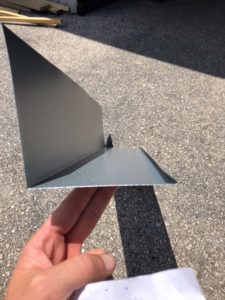What is flashing on a roof and what are the types of flashing I should know about?
 Your roof is made up of several different components. Most roofs are comprised of sheathing, underlayment, roof material, roof intersections, flashing details, and ventilation. Each of these must be installed correctly to work together to protect your home. Where flashing is installed depends upon the type and slope of your roof and the various openings in its design.
Your roof is made up of several different components. Most roofs are comprised of sheathing, underlayment, roof material, roof intersections, flashing details, and ventilation. Each of these must be installed correctly to work together to protect your home. Where flashing is installed depends upon the type and slope of your roof and the various openings in its design.
Flashing is a vital part of your home’s structure. It helps direct the flow of water around openings in your roof such as the edges of skylights, soil stacks, chimneys, vent fans, and roof valleys. It is also used at the intersections of the roof deck and dormer walls. Other applications include use on the ground level of a masonry building, above all wood trim on doors, windows, and shelves. It also protects features of the roof structure, and where exterior decks and stairs attach to the house. Flashing protects your home from water which can cause significant and expensive damage to building materials and structure of your home. Flashing also protects your home moisture which promotes mold growth.
Proper flashing installation is essential. Joints, especially corners, are soldered or brazed where the pieces of flashing join and wrap around the structures of your home. It is a wise choice to hire professional experienced roofers to install flashing.
If you have any questions or would like a free estimate, call or contact us today.
